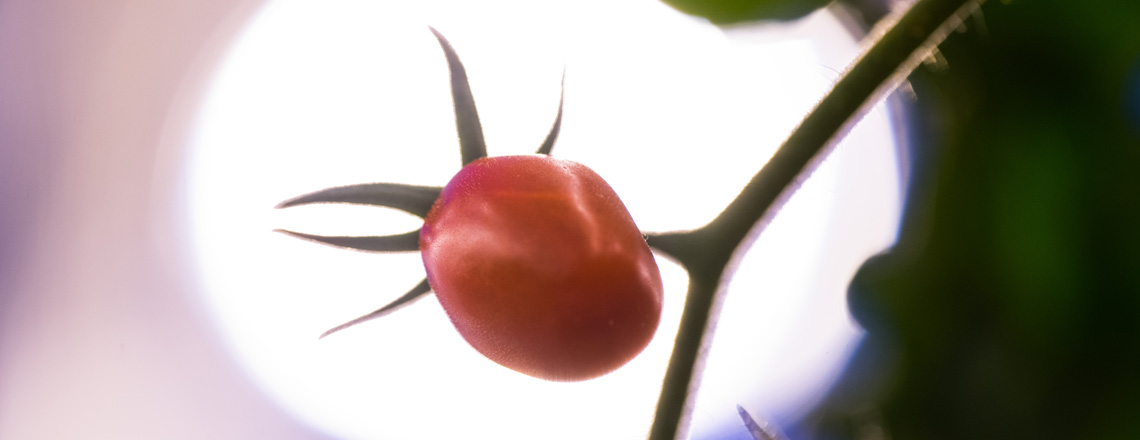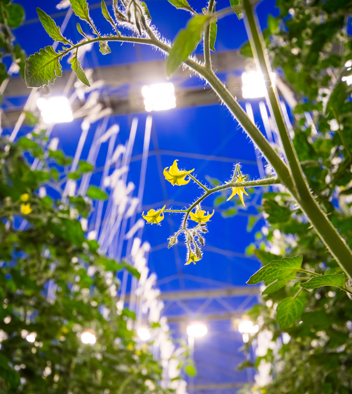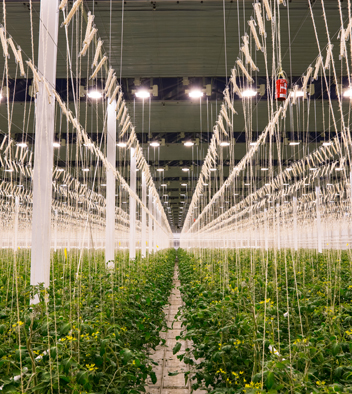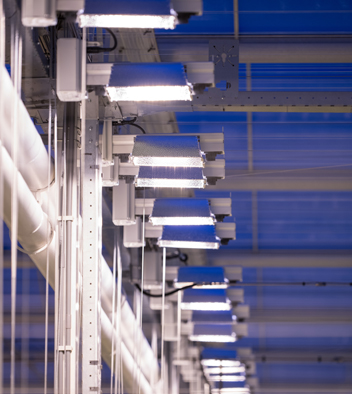Sustainable cultivation under high light levels
Wiij Gartneri has been led by the principle of innovation since the company was founded in 1937. In the past, they focussed on new varieties and better cultivation methods. Later on, extending the supply season, using environmentally responsible cultivation methods and reducing the carbon footprint became important as well.
With its 60 ha in open field production and 6 ha under glass, plus holding a majority share in the nearby Miljøgartneriet (7.7 ha in greenhouses), Wiig Gartneri is one of the largest vegetable production companies in Norway. The company’s location near the coast in Jæren benefits from the mild climate provided by the warm Gulf Stream, yet the growing season in southern Norway is short. This led Wiig Garteneri to embrace assimilation lighting early on., allowing them/the company to extend the growing season.
The company produces open field vegetables such as broccoli, broccolini, other brassicas and celery. The main crops cultivated in the greenhouses are tomatoes (many different varieties), cucumbers and sweet snack peppers. Most products are supplied to the Co-op supermarket chain, but the company also has its own retail operation that sells both vegetables and the summer flowers it grows itself. ‘ During the summer months, we attract large numbers of visitors who come to see our wide range of products, whilst at the same time introducing them to our environmentally responsible approach’, says Frode Ringsevjen who took over the company along with his wife Anne from her father Kåre Wiig.

A preference for Norwegian products
This significant interest among visitors also demonstrates the strong preference that Norwegian consumers have for products produced in their own country. Even so, Norwegian horticulture is only able to meet one-third of the market demand. A significant reason for this is the short growing season. This was why Kåre Wiig developed an early interest in extending the growing season through the use of assimilation lighting. ‘It started with the use of artificial lighting for young plants in our own plant nursery. This was then followed by its use with cucumbers, when a practical trial showed that artificial lighting had economic benefits. Shortly thereafter, tomatoes, and then sweet snack peppers, were being produced under artificial lighting’, says Ringsevjen. Light levels vary from department to department and have steadily increased over time from 80 W/m2 to 220 W/m2 during the latest expansion: a semi-closed greenhouse built in 2016.
‘A light level such as this is also needed if you are to grow good-tasting tomatoes during the winter.’ This level could probably be increased, but that would be an economic consideration’, he explains. He is keeping an eye on research involving the use of LED lamps, but still prefers HPS lamps. ‘The cost of LED lamps is still too high. The future might involve a combination of LEDs and HPS.’
Quality counts in the long run
Wiig contacted Gavita after talking with an enthusiastic fellow grower. Since then, he has never switched to another supplier. ‘We are very pleased with their quality, expertise and follow-up. Gavita thinks like we do: quality counts in the long run. We’re definitely interested in keeping our growing costs down, but we don’t go for the lowest purchase price. After all, this wouldn’t be the best choice for the long term’, he says.
Ringsevjen himself has a background as a crop consultant and obtains his information about improving cultivation under artificial lighting from many different sources. ‘Talks with Gavita’s sales manager in Norway are often about new technological developments and whether they would be useful for our situation. This often concerns ways of arriving at the highest possible light efficiency’, he says.



Sustainable production
Sustainable crop production is a very important issue in Norway. Wiig Gartneri and Miljøgartneriet are looking for various ways to achieve this. Miljøgartneriet is obtaining waste heat and CO2 from a nearby milk plant operated by the Tine dairy company. In addition, the greenhouse walls are double glazed, the energy screens are often put to use and the irrigation water is recirculated.
The semi-closed greenhouse at Wiig Gartneri has two energy screens. When the screens are closed, the 1000-Watt light fittings produce so much heat that this becomes a problem. This problem, however, has been turned into an opportunity in an inventive manner. Ringsevjen explains: ‘We use a cooling system to ‘harvest’ the excess heat. This heat is then stored in buffer tanks and used in an adjacent greenhouse. Heat pumps ensure that the water reaches the right temperature. This method allows us to harvest no less than 5 million KW/ha every year. As far as I know, we’re still the only ones doing this.’
number one on their wish list is to expand their market. With this in mind, the focus is on tomatoes, particularly their flavour. It begins with choosing the right varieties. Next, the tomatoes are harvested when much more mature than imported products and transported to retail outlets in a shorter length of time. Finally, Wiig will also be able to promote its tomatoes as being cultivated using environmentally responsible methods.
